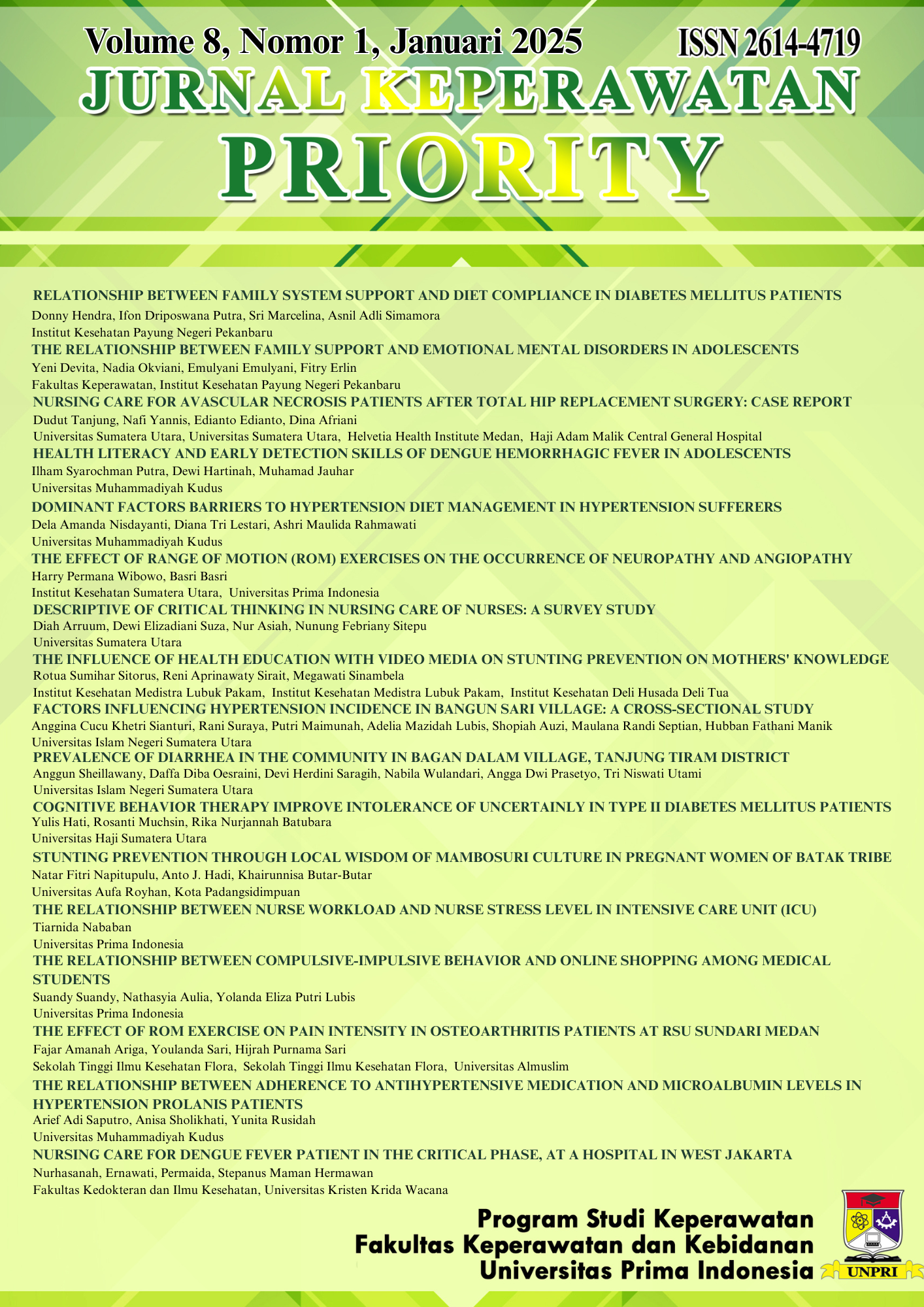The Influence of Health Education with Video Media on Stunting Prevention on Mothers' Knowledge
##plugins.themes.academic_pro.article.main##
Abstract
Stunting is a chronic malnutrition condition experienced by a person since pregnancy and early childhood, failure to thrive in children (Stunting) is a challenge in the development of a quality Indonesian society. This study aims to determine the effect of health education with video media on preventing stunting. This study is a quantitative study with a quasi-experimental method. The study was conducted in the work area of the Laut Tador Health Center, Batu Bara Regency in January 2024. The population in this study were all stunted babies totaling 171 people, a sample of 47 respondents was obtained. The results of the study showed that out of 47 respondents, aged 25-30 years (61.3%) and 31-35 years (38.3%). Based on education with Senior High School education (53.2%), Elementary School education (6.4%), Junior High School education (8.5%), and Diploma/Bachelor education (31.9%), while based on occupation with jobs as IRT (Housewife) (53.2%), employees (25.5%), and teachers (21.3%). The results of the paired sample test obtained an average value before and after counseling of 13.085 with a standard deviation of 17.306 with a t value of -5.183. The significance value of the p-value is 0.000 (<0.05), so it can be concluded that there is an influence of providing video media on respondents' knowledge in preventing stunting before and after.
##plugins.themes.academic_pro.article.details##

This work is licensed under a Creative Commons Attribution 4.0 International License.

